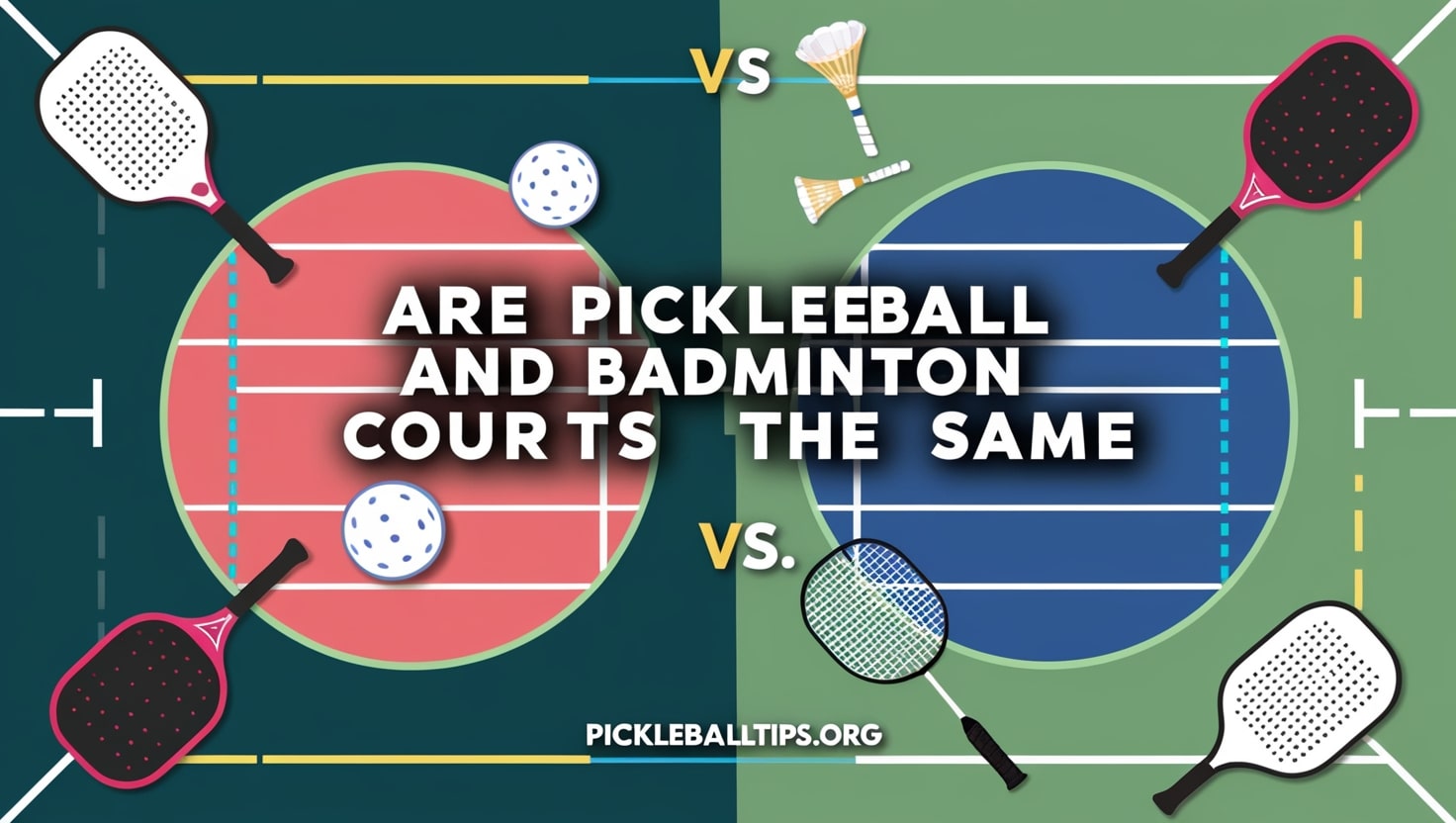The popularity of racket sports like pickleball and badminton has surged in recent years, leading to a growing interest in their courts. A common question among enthusiasts and those new to these sports is: “Are pickleball and badminton courts the same?” While these two sports share certain similarities, their courts have notable differences in dimensions, design, and functionality. This article will delve into these aspects, offering a comprehensive comparison.
Understanding the Basics of Pickleball and Badminton

Pickleball: A Rapidly Growing Sport
Pickleball is a paddle sport that combines elements of tennis, badminton, and table tennis. Played on a court about one-fourth the size of a tennis court, pickleball involves a perforated plastic ball and paddles. It is a highly inclusive sport, suitable for players of all ages and skill levels.
Badminton: A Classic Racket Sport
Badminton, on the other hand, is a traditional racket sport played with a shuttlecock. Known for its fast-paced action, badminton requires agility and precision. The game can be played in singles or doubles formats, either indoors or outdoors, but professional matches are typically conducted on indoor courts.
Court Dimensions: How Do They Compare?
The most significant distinction between pickleball and badminton courts lies in their dimensions.
Pickleball Court Dimensions
- Court Size: 20 feet wide by 44 feet long.
- Net Height: 36 inches at the sidelines and 34 inches at the center.
- Non-Volley Zone (NVZ): A 7-foot area on either side of the net, often called the “kitchen.”
Badminton Court Dimensions
- Court Size: 20 feet wide by 44 feet long for doubles; 17 feet wide by 44 feet long for singles.
- Net Height: 5 feet 1 inch at the edges and 5 feet at the center.
- Service Area: Divided into right and left service courts with additional markings for singles and doubles play.
While the overall court length and doubles width are identical, the additional markings and net height make a badminton court distinct.
Court Layout and Markings
Pickleball Court Layout
Pickleball courts are designed with simplicity in mind. The court is divided into two equal halves by a net, and the non-volley zone near the net plays a critical role in the game’s strategy. Beyond the NVZ, the remaining space is the playing area for serves and rallies.
Badminton Court Layout
Badminton courts feature a more complex layout with multiple lines and zones:
- Service Courts: Two service areas for each side.
- Back Boundary Line: Marks the end of the court for singles and doubles.
- Side Lines: Separate singles and doubles areas.
These additional markings enable the varied gameplay styles of singles and doubles badminton matches.
Surface and Materials
The surface materials for pickleball and badminton courts can vary, further differentiating them.
Pickleball Court Surface
Pickleball courts are often constructed with:
- Asphalt or Concrete: Standard materials for outdoor courts.
- Indoor Flooring: Typically hardwood or cushioned synthetic surfaces for indoor play.
Badminton Court Surface
Badminton courts are generally:
- Wooden: Preferred for professional indoor matches.
- Synthetic Mats: Provide cushioning and reduce the risk of injury.
Outdoor badminton courts are rare and less regulated in terms of surface material.
Net Height and Design
The net is another defining factor between pickleball and badminton courts.
Pickleball Net
- Height: 36 inches at the sidelines and 34 inches at the center.
- Design: Made of durable materials to withstand outdoor elements.
Badminton Net
- Height: 5 feet 1 inch at the sides and 5 feet at the center.
- Design: Lighter and more delicate, typically used indoors to prevent weather damage.
The differences in net height and design influence gameplay dynamics significantly.
Shared Courts: Is It Possible?
Many facilities aim to maximize space by combining pickleball and badminton courts. While this is feasible, adjustments are necessary to meet the requirements of each sport.
Conversion Challenges
- Net Height Adjustment: The net height must be altered for each game.
- Markings: Temporary lines or tape may be used to accommodate different layouts.
- Surface Suitability: The surface needs to cater to both sports’ demands.
Benefits of Shared Courts
- Cost-Effective: Reduces the need for separate installations.
- Versatility: Encourages participation in multiple sports.
However, shared courts might not offer the optimal experience for professional-level play.
Key Differences in Gameplay Impact
The differences in court design and layout have a direct impact on gameplay.
Pickleball
- Pacing: Slower than badminton due to the ball’s properties.
- Strategy: Emphasizes precision, placement, and control.
- Player Movement: Limited compared to badminton.
Badminton
- Pacing: Faster with rapid shuttlecock movements.
- Strategy: Requires agility and quick reflexes.
- Player Movement: More extensive, with frequent jumps and lunges.
These contrasts highlight how court specifications influence the physical demands and strategies of each sport.
Conclusion
While pickleball and badminton courts share some similarities, such as their dimensions, they are far from identical. Differences in net height, markings, and surface materials make each court uniquely suited to its respective sport. Understanding these distinctions ensures that players can enjoy the best possible experience, whether they’re smashing a shuttlecock or executing a dink shot.
Thank you for reading this detailed comparison on pickleballtips.org! Your interest and enthusiasm fuel our mission to provide valuable insights into the world of pickleball and beyond. We hope this article has answered your question: “Are pickleball and badminton courts the same?” Stay tuned for more tips and updates!
